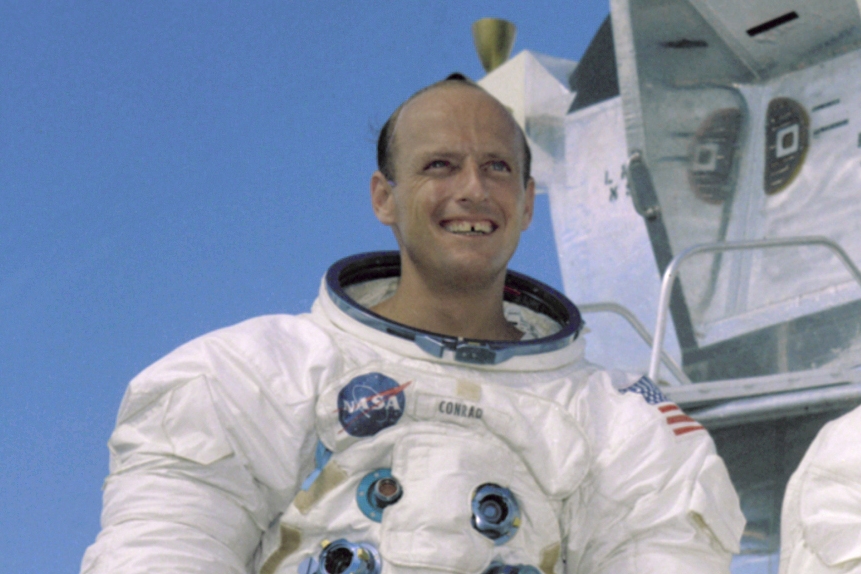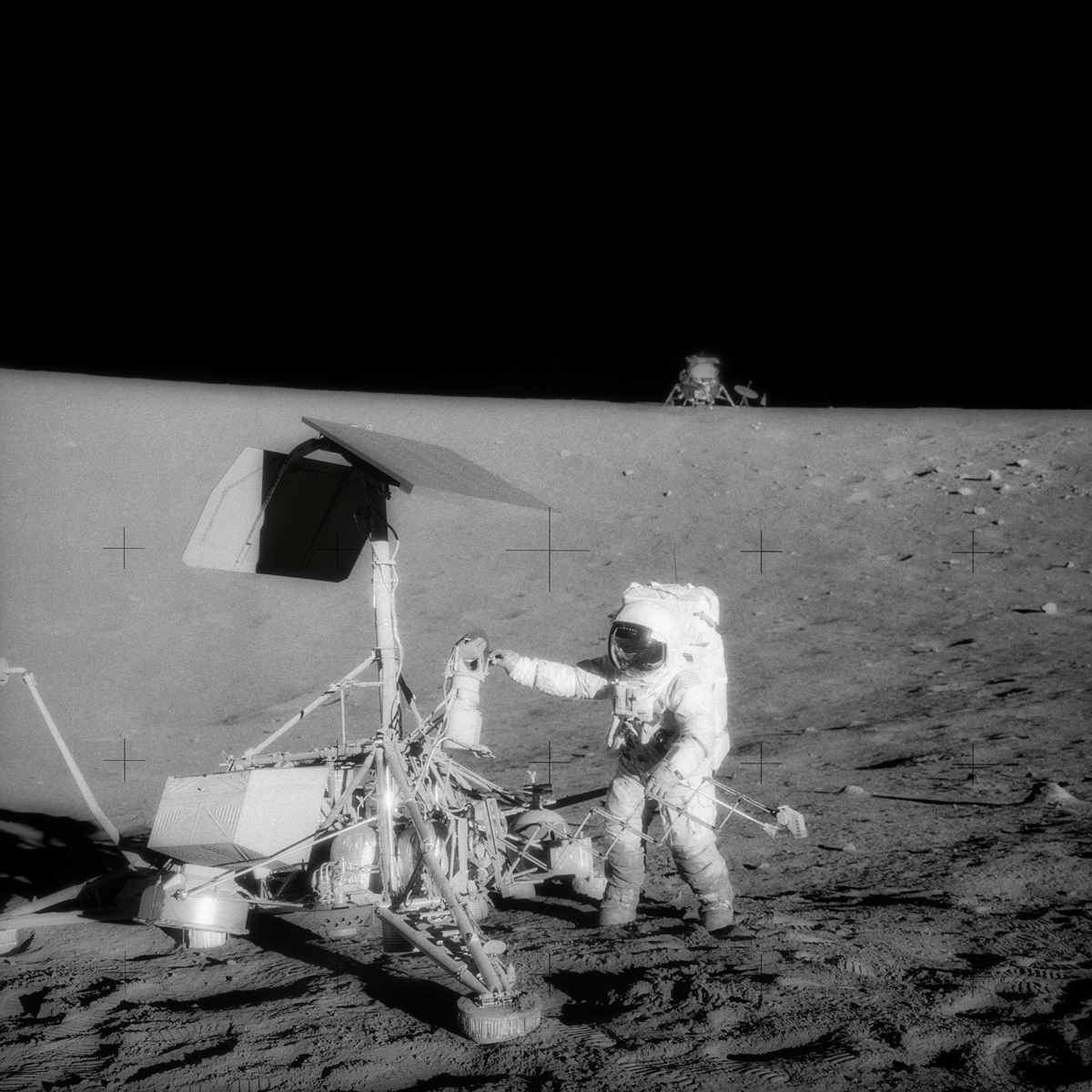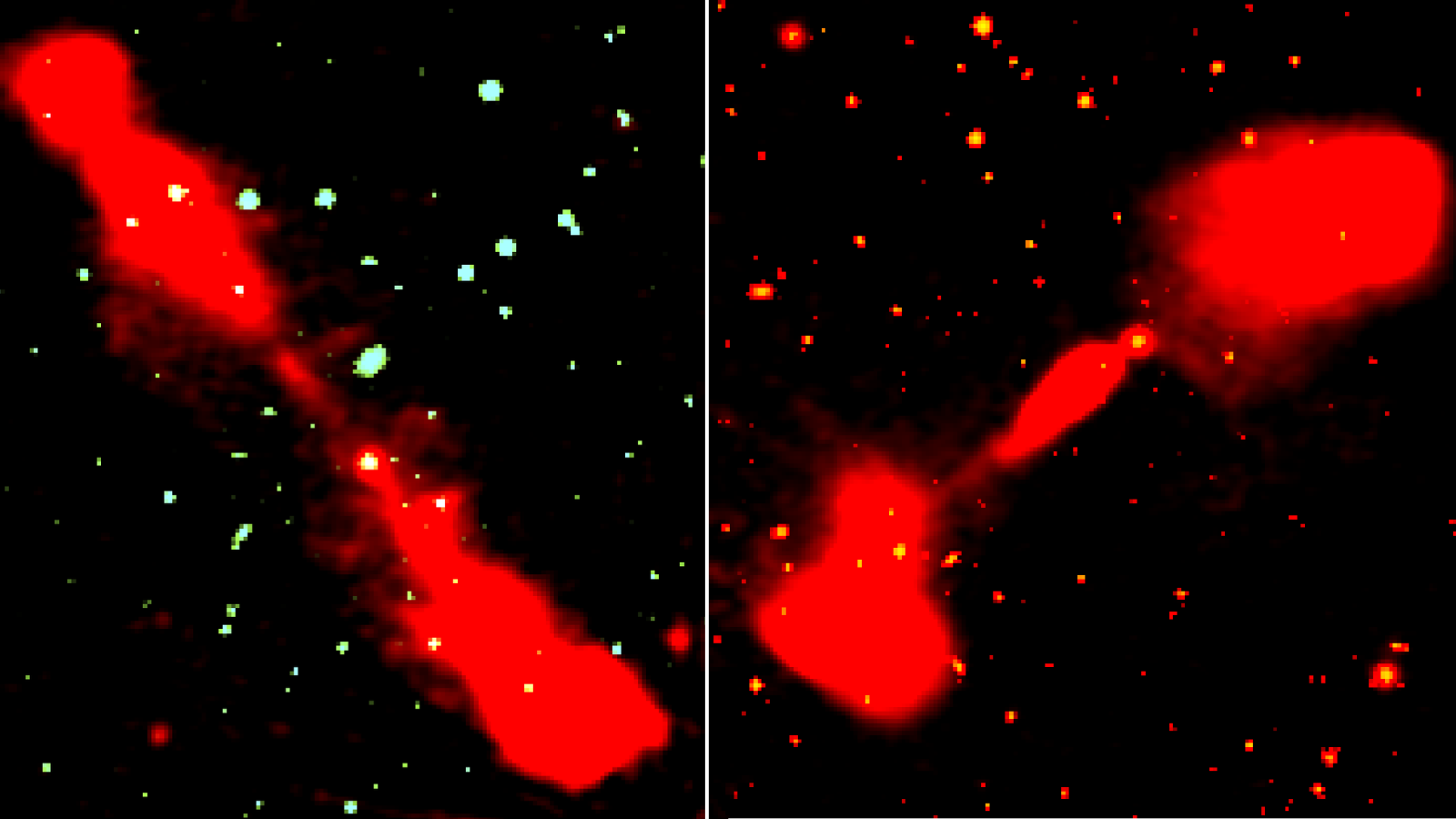Pete Conrad: Apollo 12 Commander
Charles "Pete" Conrad was a true buccaneer of the space age. He drove fast cars, enjoyed fast planes and selected his first words on the moon to win a bet with a journalist. (He never collected on the money.)
Conrad flew four times in space, but is best remembered as the commander of Apollo 12 – the second mission to the moon. He steered the lunar module Intrepid to the first pinpoint landing, just a little ways down from the unmanned spacecraft Surveyor.
After Conrad left NASA, he still participated in the space program as one of the people developing the Space Exploration Initiative, a George H.W. Bush administration idea that was supposed to bring humans to Mars and other destinations.
Conrad died in 1999 from injuries sustained during a motorcycle crash.
Overcoming dyslexia
Growing up in the 1930s and 1940s, Conrad struggled with dyslexia. The reading disorder was not known at the time outside of a few medical journals, prompting teachers to call him lazy despite his best efforts, according to the biography "Rocketman" that was co-written by his wife, Nancy.
"Math and science may have been a snap for the boy who loved moving parts and connecting wires and helping Morris tune a carburetor. But middle school at Haverford was and is about reading: Hawthorne, Tennyson, Chaucer ... There weren't any moving parts here," the biography stated.
Breaking space news, the latest updates on rocket launches, skywatching events and more!
As he grew older, Conrad developed coping mechanisms and successfully earned an aeronautical engineering degree from Princeton. Conrad's first job after university was in the Navy. He was trained as a test pilot and also became a flight instructor and performance engineer at the Navy's famed test pilot school in Patuxent River, Maryland, which generated many of the early astronauts.
NASA selected Conrad as a candidate for the first group of Mercury astronauts, but Conrad's reported dismissive attitude towards some of the medical tests led to his disqualification. In 1962, he tried again – a lot of those tests had been dropped in the meantime – and was picked as part of the second group of astronauts.
In short order, Conrad ratcheted up two missions in space: Gemini 5, which then set a space endurance record in its eight days in space, and Gemini 11, which flew higher above Earth than any other spacecraft that came before it.
Winning the bet
Apollo 12 in 1969 went through a few adventures even before it left Earth. Conrad's first moments commanding the mission were marked by a lightning strike that temporarily affected the computer. Mission Control quickly radioed up a fix and the mission proceeded normally, save for a few extra checks when the astronauts were about to leave orbit for the moon.
Conrad and Alan Bean descended toward the Ocean of Storms on Nov. 19, while Richard Gordon orbited the moon in the command module. The lunar lander touched down close by the unmanned Surveyor spacecraft – one of the primary targets, as NASA wanted a piece of the machine to see how well it was holding up in the harsh lunar environment.
Multiple sources say Pete Conrad's first words on the moon when walking on the moon came from a bet that he made with journalist Oriana Fallaci, who believed that NASA would script those first few moments. Conrad, who was only 5 feet 6 inches (167 centimeters) tall, cried out: "Man, that may have been a small one for Neil, but that's a long one for me."
Fallici was supposed to pay Conrad $500 in 1969 dollars (the equivalent of more than $3,100 today), but Conrad said he never received the money.
Space stations and Mars work
Conrad's next assignment after Apollo was Skylab, the first United States space station. He helmed an emergency rescue of the station that took place after a solar panel ripped off during launch, causing the station to overheat. Once his crew got the place cooled down, they spent about a month in space.
He retired from NASA and the Navy in December 1973 to join American Television and Communications Corp., and spent the rest of his life in private industry. Notably, as staff vice president of new business for McDonnell Douglas Space Company in the 1990s, he took part in research and development for the Space Exploration Initiative.
Conrad's sudden death in July 1999 caused a shockwave in the Apollo community, which was reuniting that month to commemorate the 30th anniversary of Apollo 11's landing.
Perhaps the most memorable description of Conrad came from Michael Collins, who also flew to the moon on Apollo 11 as command module pilot, but did not land:
"Funny, noisy, colorful, cool, competent; snazzy dresser, race-car driver. One of the few who lives up to the image. Should play Pete Conrad in a Pete Conrad movie."
— Elizabeth Howell, SPACE.com Contributor

Elizabeth Howell (she/her), Ph.D., was a staff writer in the spaceflight channel between 2022 and 2024 specializing in Canadian space news. She was contributing writer for Space.com for 10 years from 2012 to 2024. Elizabeth's reporting includes multiple exclusives with the White House, leading world coverage about a lost-and-found space tomato on the International Space Station, witnessing five human spaceflight launches on two continents, flying parabolic, working inside a spacesuit, and participating in a simulated Mars mission. Her latest book, "Why Am I Taller?" (ECW Press, 2022) is co-written with astronaut Dave Williams.


